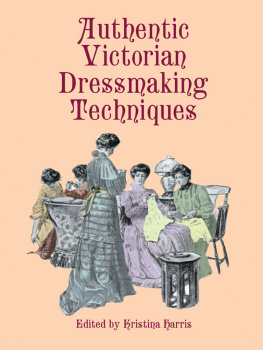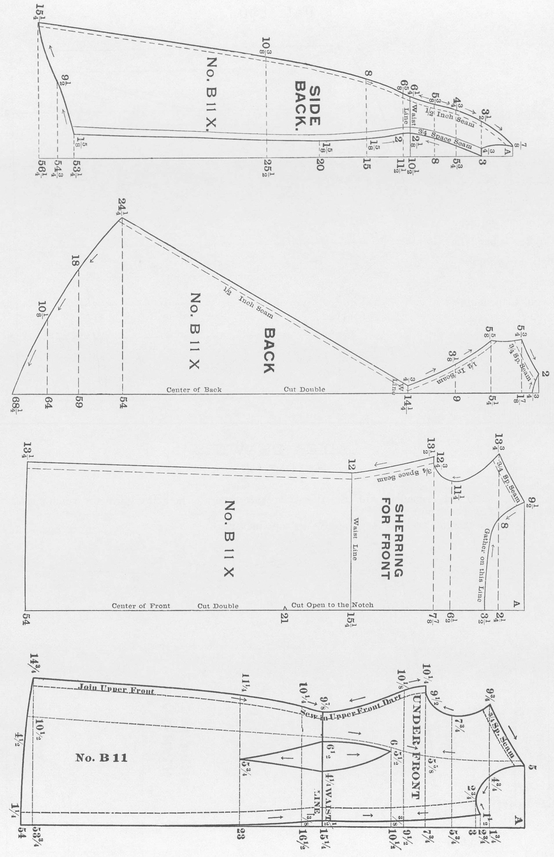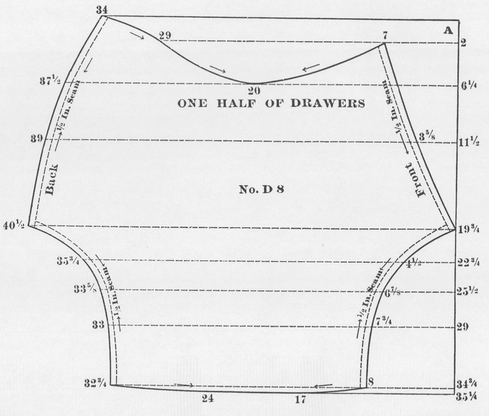DOVER BOOKS ON FASHION
HATS: A HISTORY OF FASHION IN HEADWEAR, Hilda Amphlett. (0-486-42746-3)
EVERYDAY FASHIONS OF THE TWENTIES AS PICTURED IN SEARS AND OTHER CATALOGS, Edited by Stella Blum. (0-486-24134-3)
EVERYDAY FASHIONS OF THE THIRTIES As PICTURED IN SEARS CATALOGS, Edited by Stella Blum. (0-486-25108-X)
THE HISTORY OF UNDERCLOTHES, C. Willett Cunnington and Phillis Cunnington. (0-486-27124-2)
WOMENS HATS, HEADDRESSES AND HAIRSTYLES: WITH 453 ILLUSTRATIONS, MEDIEVAL TO MODERN, Georgine de Courtais. (0-486-44850-9)
HISTORIC COSTUMES AND HOW TO MAKE THEM, Mary Fernald and E. Shenton. (0-486-44906-8)
WHAT PEOPLE WORE: 1,800 ILLUSTRATIONS FROM ANCIENT TIMES TO THE EARLY TWENTIETH CENTURY, Douglas Gorsline. (0-486-28162-0)
AUTHENTIC VICTORIAN DRESSMAKING TECHNIQUES, Edited by Kristina Harris. (0-486-40485-4)
AUTHENTIC VICTORIAN FASHION PATTERNS: A COMPLETE LADYS WARDROBE, Edited by Kristina Harris. (0-486-40721-7)
MEDIEVAL COSTUME AND HOW TO RECREATE IT, Dorothy Hartley. (0-486-42985-7)
PICTORIAL ENCYCLOPEDIA OF HISTORIC COSTUME: 1200 FULL-COLOR FIGURES, Albert Kretschmer and Karl Rohrbach. (0-486-46142-4)
ACCESSORIES OF DRESS: AN ILLUSTRATED ENCYCLOPEDIA, Katherine Lester and Bess Viola Oerke. (0-486-43378-1)
THE CORSET AND THE CRINOLINE: AN ILLUSTRATED HISTORY, W. B. Lord. (0-486-46186-6)
EVERYDAY FASHIONS OF THE FORTIES As PICTURED IN SEARS CATALOGS, Edited by JoAnne Olian. (0-486-26918-3)
EVERYDAY FASHIONS OF THE FIFTIES As PICTURED IN SEARS CATALOGS, Edited by Joanne Olian. (0-486-42219-4)
EVERYDAY FASHIONS, 1909-1920, As PICTURED IN SEARS CATALOGS, Edited by JoAnne Olian. (0-486-28628-2)
VICTORIAN AND EDWARDIAN FASHIONS FROM LA MODE ILLUSTRE, JoAnne Olian. (0-486-29711-X)
FULL-COLOR SOURCEBOOK OF FRENCH FASHION: 15TH TO 19TH CENTURIES, Pauquet Frres. (0-486-42838-9)
AN ILLUSTRATED DICTIONARY OF HISTORIC COSTUME, James Robinson Planch. (0-486-42323-9)
60 CIVIL WAR-ERA FASHION PATTERNS, Kristina Seleshanko. (0-486-46176-9)
See every Dover book in print at www.doverpublications.com
GENERAL DIRECTIONS
TO TAKE MEASURES. Great care should be taken in getting measures. (See illustration below.)
TAKE BUST MEASURE with the tape measure straight around the largest part of the bust, as shown below, high up under the arms; take a snug, close measure neither too tight nor too loose.
TAKE MEASURE AROUND THE WAIST as tight as the dress is to be worn.
TAKE LENGTH OF WAIST from the large joint where neck and body join, down to the waist. Care must be taken to get this measure.
SLEEVE MEASURE is taken from the center of back to wrist joint,with arm raised and elbow bent.
IN CUTTING a garment look carefully at the drafts being copied; use numbers and curves as shown in draft.
THE ARROWS are used for two purposesone to show which way to turn the curve, the other the number of points to be connected with the curve.
THE CURVE should always be turned with the largest part in the direction in which the arrow points.
When the arrow is placed between two lines it shows that only two points are to be connected.
When the arrow is placed upon a cross line it shows that three points must be connected with the curve, that the point by the arrow is the middle one, and the points nearest on each side must be connected with the curve at the same time with larger part of the curve turned in the direction the arrow points.
The letter A in corner of draft is the starting point in making draft.
DIRECTIONS FOR BASTING.
FIRST:Smooth, even tracing is very necessary. Place the pattern smooth on lining crosswise. Trace each line carefully. Cut out the lining same as pattern. Place the lining straight on the goods, the nap, if any, running down. Pin the lining at the waist line. Full the lining (from to inch) each side of the waist line, from 1 inches below the waist line to 2 inches above, the greatest fullness coming at the waist line; this shortens the lining, but when boned it will be stretched to place. Leave the lining easy each way, from top of darts to shoulders, and one-fourth of an inch full at center of shoulder line. Never backstitch in basting or draw the thread tight.
In joining the different parts together, care must be taken, as smooth, even basting is necessary. Pass the needle exactly through the traced seam lines on both sides of the seam, as many garments are ruined by careless basting.
In joining the back and side-back, hold the side-back to you, thus you will baste one up and the other down. It is a good idea to pin these pieces before basting. If the shoulder blades are prominent, hold the back piece a little full where the shoulder blades strike to within 1 inches of arms-eye. In basting the shoulders, hold the back to you. Baste evenly for one inch, then stretch the front shoulder to match the back, for the back is always cut longer.
MISSES WRAPPER. Summer 1893
Use the scale corresponding with the Bust measure to draft the entire garment, which consists of upper and under Fronts, upper and under Backs, side-back and three sleeve portions. This wrapper is suitable for a Miss or a Lady. Cut the upper portions out at the neck. (See diagrams.) Gather and sew to the under front and back. If desirable the Front may be shirred at the Waist line, same as the Back. Gather the upper Sleeve and sew to the lining.
Regulate the length of the Skirt by the tape-measure.
LADIES TEA GOWN. Spring 1893
Use scale corresponding with the Bust measure to draft the entire garment, which consists of three front portions, Back and Side-back, Sleeve and Cuff.
The shirring is made of lace or soft silk. Join the different portions as indicated on the cuts. Any style of trimming may be used.
Regulate the length by the tape-measure.
LADIES DRAWERS. Fall 1890
LADIES DRAWERS.
Use the scale corresponding with the waist measure.
Draft the same as any other garment.
Make the band the length and width desired.
Regulate the length by the tape measure.
LADIES DRAWERS. Spring 1893





















